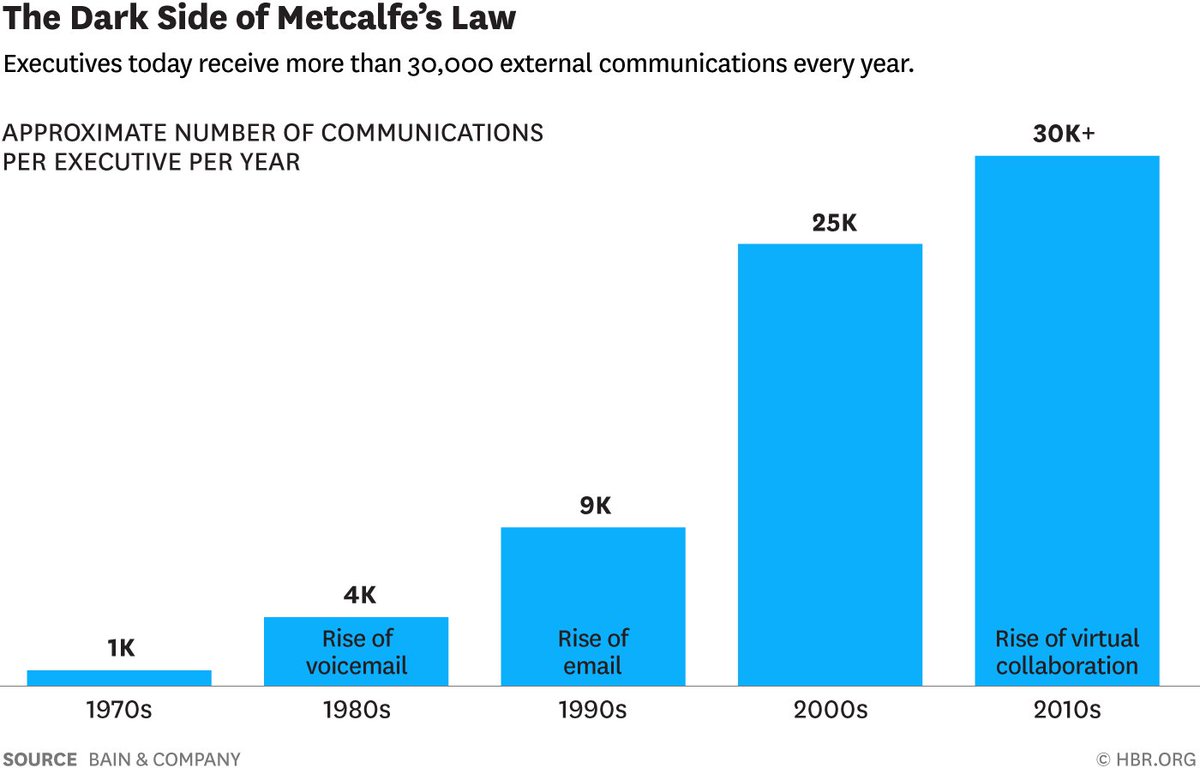26 Jun Is technology harming productivity?
For years, we’ve assumed that investment in technology is a fast-track to productivity.
No end of productivity-enhancing apps have been developed and organisations have adopted a range of collaboration tools. Staff send and receive emails via Office365, discuss projects on Slack, keep track of task lists on Trello and dial into calls on Webex or Skype for Business.
But have these tools enhanced productivity? Or have they created an endless backlog of messages to read, respond to and keep track of?

The internet had a dramatic impact on productivity when businesses were first connected in the 1990s. But the correlation between investment in technology and productivity in the US has deteriorated over the past 10 years. Spending on tech has gone up, productivity has not. Granted, this is based on US data, but UK workers use many of the same tools as our US counterparts and the UK has suffered a similar ‘productivity slump’.
So why are businesses experiencing diminished returns in productivity on their tech investment?
The dark side of Metcalfe’s Law
Metcalfe’s Law states that the total value of a network increases with each user that gets added to it. However, this connectivity can have adverse side-effects.
As the cost of communications over a network falls, the number of messages sent over that network increases. So to does the time required to process and respond to these messages.
Harvard Business Review call this The Dark Side of Metcalfe’s Law. They calculate that since the 1970s, the number of external communications received by executives has shot up from 1,000 a year to over 30,000.

A written letter requires time, effort and money. All of which make you think twice before sending. A message on Slack requires none of these things.
We assume that seamless, inexpensive communication is a good thing. But an unforeseen consequence of this may be that we send more messages than we need to.
Too many meetings
Time wasted in meetings costs the UK economy £191 billion a year. The same survey found that we spend over 10 and a half hours preparing for and attending meetings each week. This figure increases to over 50% for executives.
HBR surveyed 182 managers across a range of industries and found that 71% of them said meeting were inefficient and unproductive and 65% said they kept them from doing their own work.
In the past, the combination of offline calendars and the need to be in the same place made scheduling meetings quite challenging. As a result, you were unlikely to schedule one unless you needed to.
Now we can schedule a meeting and invite participants in a matter of seconds. As a result, the number of meetings we attend has increased year-on-year since 2008. But are these meetings adding value or just taking up more of our time?
Platform overload
Most teams use four or more applications to manage their internal communications. While each of these apps, individually, may speed up a particular task or process, the overall effect is a drain on our time as we switch between different channels to keep up with messages and tasks.
Conversations start on one channel, then switch over to another. Or worse still, happen on both platforms at the same time. We’re sure that we shared an attachment with a colleague, but we can’t remember which platform we shared it on.
As we accumulate platforms, the time-cost required to learn how to use these platforms grows. New starters have to get to grips with multiple different tools in a short space of time. And the more tools we have, the less likely we are to figure out how to get the most out of them.
What’s the solution?
Clearly, too much technology can be a bad thing. At a macro-level, increased investment in technology hasn’t delivered increased productivity. And most of us will be able to empathise with at least one of the day-to-day frustrations listed above.
Obviously, the answer isn’t to revert back to analogue ways of working. Any company that attempted to do so would go out of business fairly fast. But the use of technology needs to be considered and carefully managed.
How can we do this?
Pick solutions that simplify
The reason email was so revolutionary was that it made something we were already doing – sending and receiving messages – easier, faster and cheaper. It simplified things.
Decision-makers ought to look at their collaboration tools and ask themselves:
- Do these tools simplify our lives or make them more complex?
- Can we fulfil our core business functions without any of them?
- Can any of these tools be consolidated into the others?
Getting rid of tools will not only save you money, it will save your team time. It’s genuinely a win-win.
For those tools that you choose to keep, make sure that staff know how to get the most out of them. Misusing tools or trying to figure out how to use them is a key drain on time.
Give staff uninterrupted time to focus
Problem-solving, creativity and deep thought require time to focus. Jason Fried, TED speaker and creator of Basecamp, compares deep thought to sleep. You can’t just lie down and close your eyes. You need time to relax, unwind and clear your mind.
Similarly, if staff are rushing from meeting to meeting while responding to instant messages and emails, they don’t have any time to focus on important problems that require thought and consideration.
Working from home is just one of the ways that staff carve out time to focus in this way. A flexible working policy can give your staff much-needed time and space to focus on complex tasks.
Some managers also encourage staff to block out time in their calendars each day. No meetings, no emails, no messages. This allows them to get their head down and focus on their core tasks.
Gather feedback
Every business is different. And every team within every business has different ways of working and will likely use a different combination of tools. The only way to know for sure whether these tools are helping is to speak to your staff on a regular basis.
The way that tools are supposed to be used and the way that tools end up being used are often different. Instant messaging tools are there to ask quick questions or simple messages. But they may end up being used to chat or share links to things found online. This can be fun, but it can also become a source of distraction and frustration.
Surveying your users on a quarterly or bi-annual basis – especially if you’ve recently introduced new tools – will show you how tools are really being used and whether they’re still required. It may also flag up the need for training or present opportunities to get rid of tools and save on the license cost.
Technology is not a magic bullet. It can’t deliver ever-increasing returns in productivity. In fact, as we’ve seen, we may have already hit the point of diminishing returns. However, the right tools, implemented properly and monitored on an ongoing basis can help staff work better.
If you want to find out whether your collaboration stack is helping or hindering your staff in their daily tasks, feel free to drop me a line on LinkedIn. And to find out how to equip your teams with the right combination of tools and platforms, check out our Optimal Office report.



